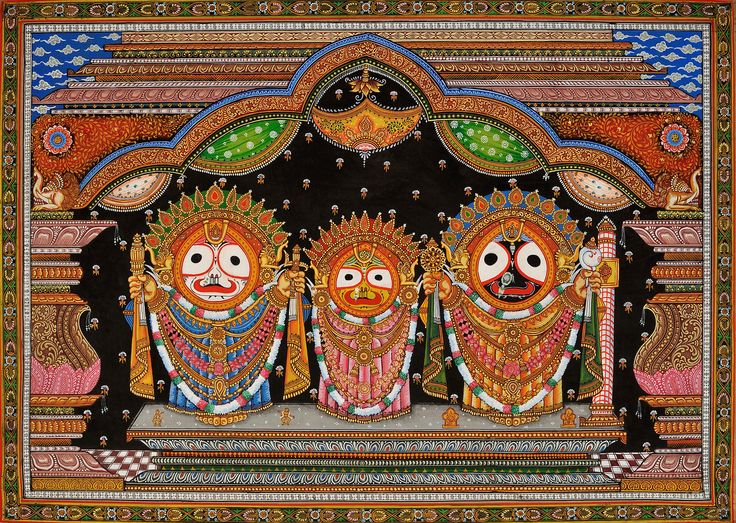When the divine idols of Lord Jagannath, Lord Balabhadra, and Goddess Subhadra retreat into isolation after their Snana Purnima bath, devotees don’t stop worship. They shift their gaze. Devotees follow a special tradition called the Anavasara Patti to worship the deities.
What Is Anavasara Patti?
The Anavasara Patti refers to painted cloth images of the three deities that are worshipped during their 15-day period of rest. These are created by temple artists using traditional methods. Jagannath is shown as Shri Ananta Narayan, Balabhadra as Shri Ananta Basudev, and Subhadra as Devi Bhubaneswari.
Painting work begins on the new moon of the month of Jyeshtha. The artists, following religious guidelines, finish these cloth paintings within 15 days, after which they are brought into the shrine with ceremonial rituals and music. A bamboo curtain is set up, and the paintings are placed before it, replacing the original deities for daily rituals, symbolizing their illness and recovery.
Why Is It Spiritually Important?
- This tradition ensures the continuation of worship even when the deities are resting.
- Keeps the spiritual connection intact between devotees and the divine.
- Highlights the symbolic human traits of the deities: illness, rest, and recovery.
- Represents Odisha’s rich temple art tradition and its deep connection to ritual.
A Living Culture
Unique to the Jagannath Temple, this practice is a beautiful combination of devotion, art, and discipline. It reflects how worship can adapt without losing sanctity.
If you visit Puri during Anavasara, don’t miss the darshan of Anavasara Patti. You will witness how tradition finds its voice in paint and prayer.
Feature Image Credit: Pinterest.
